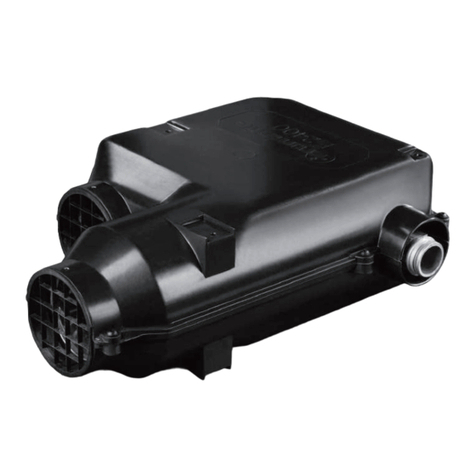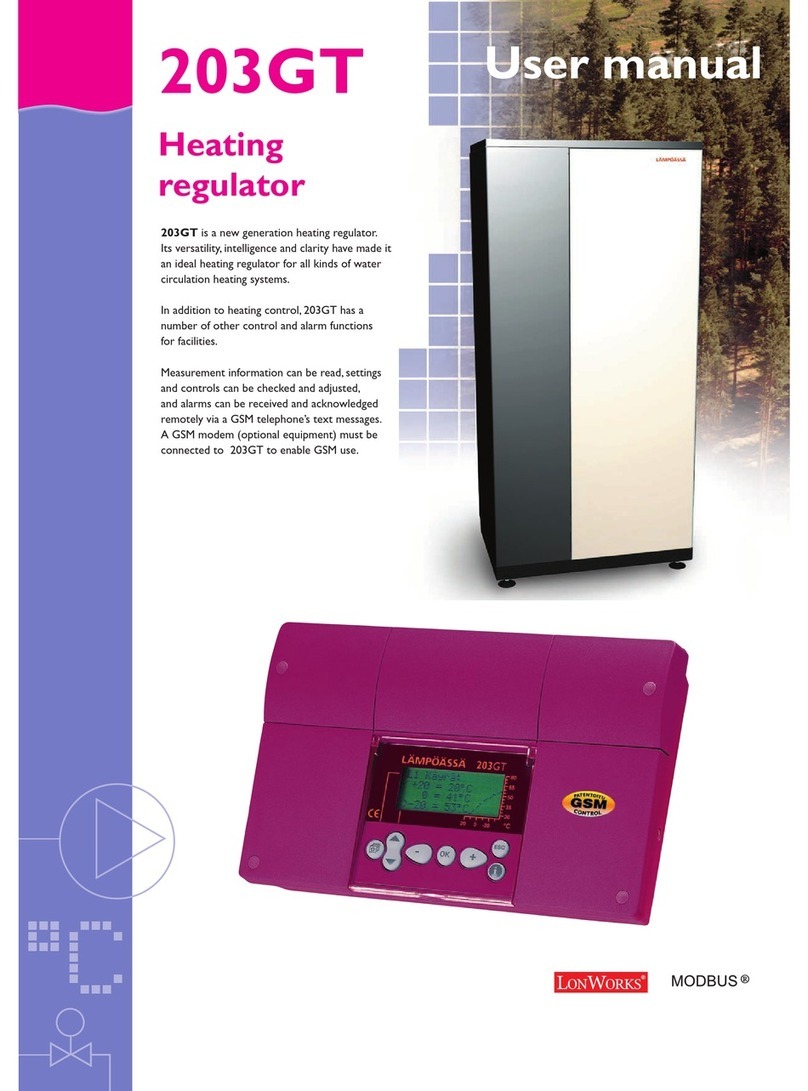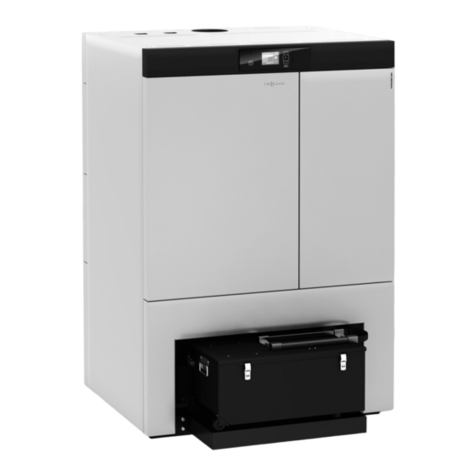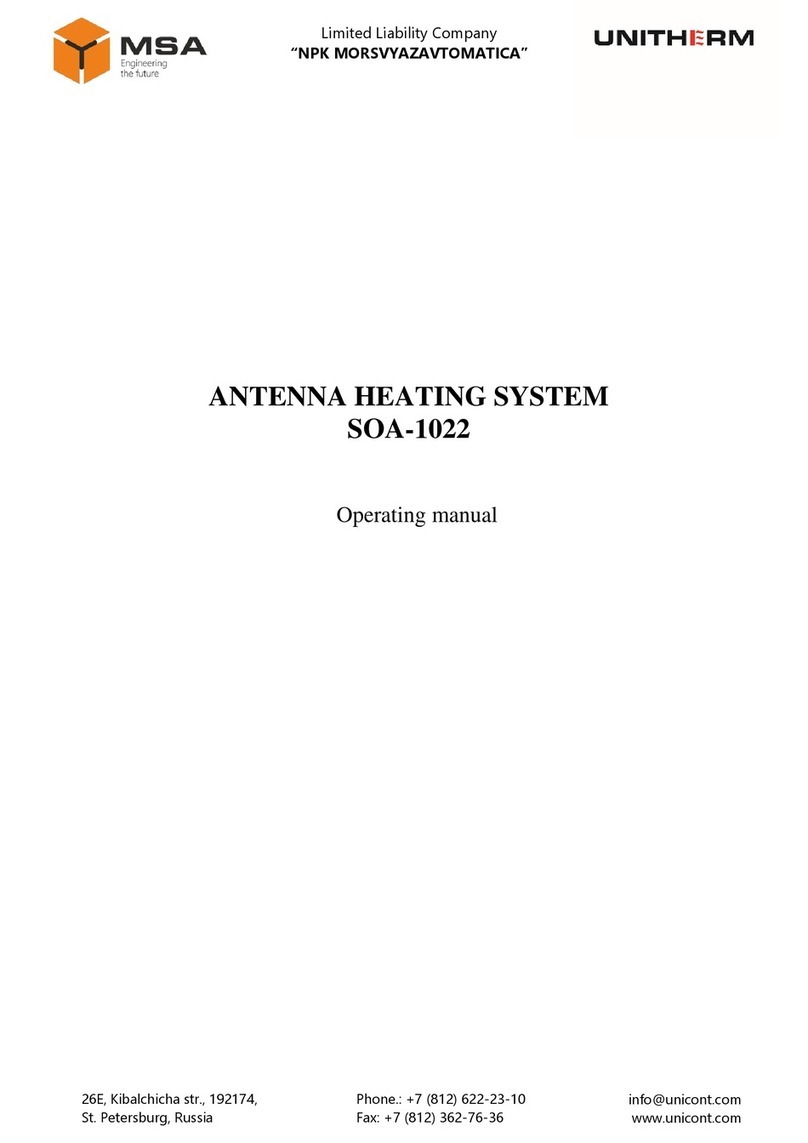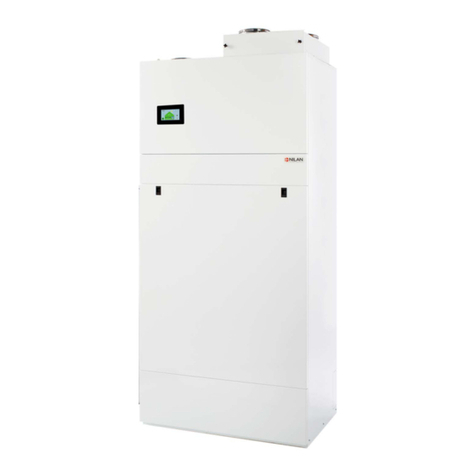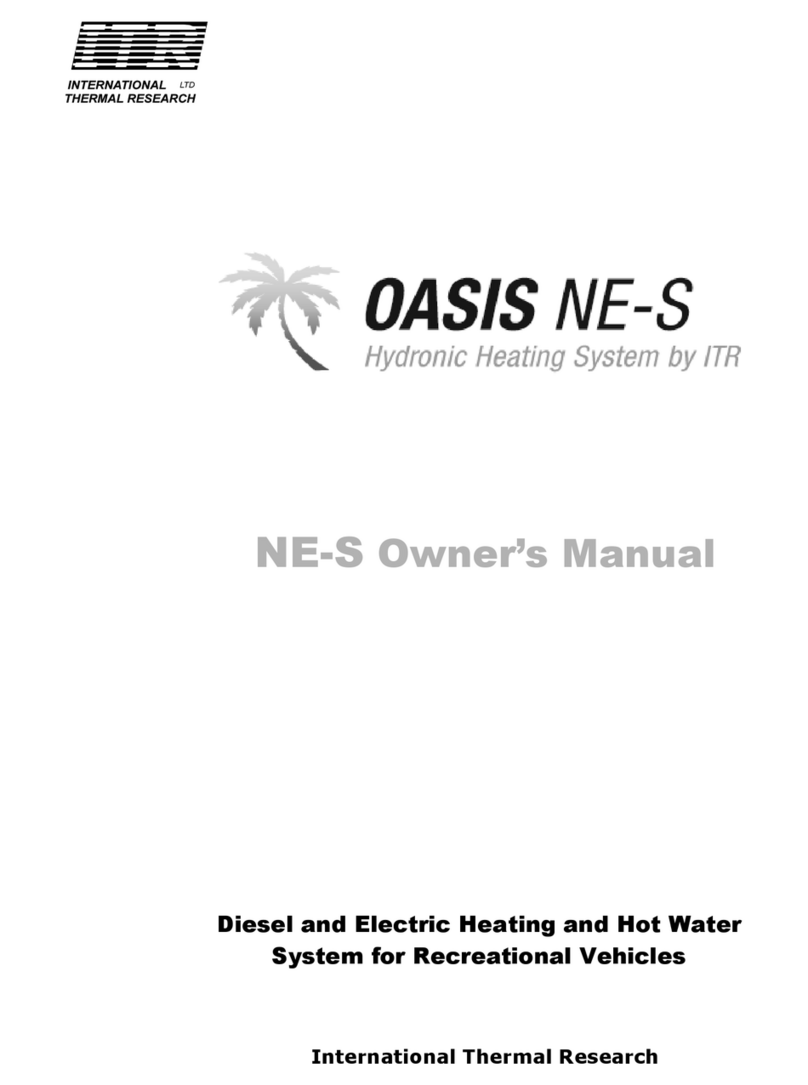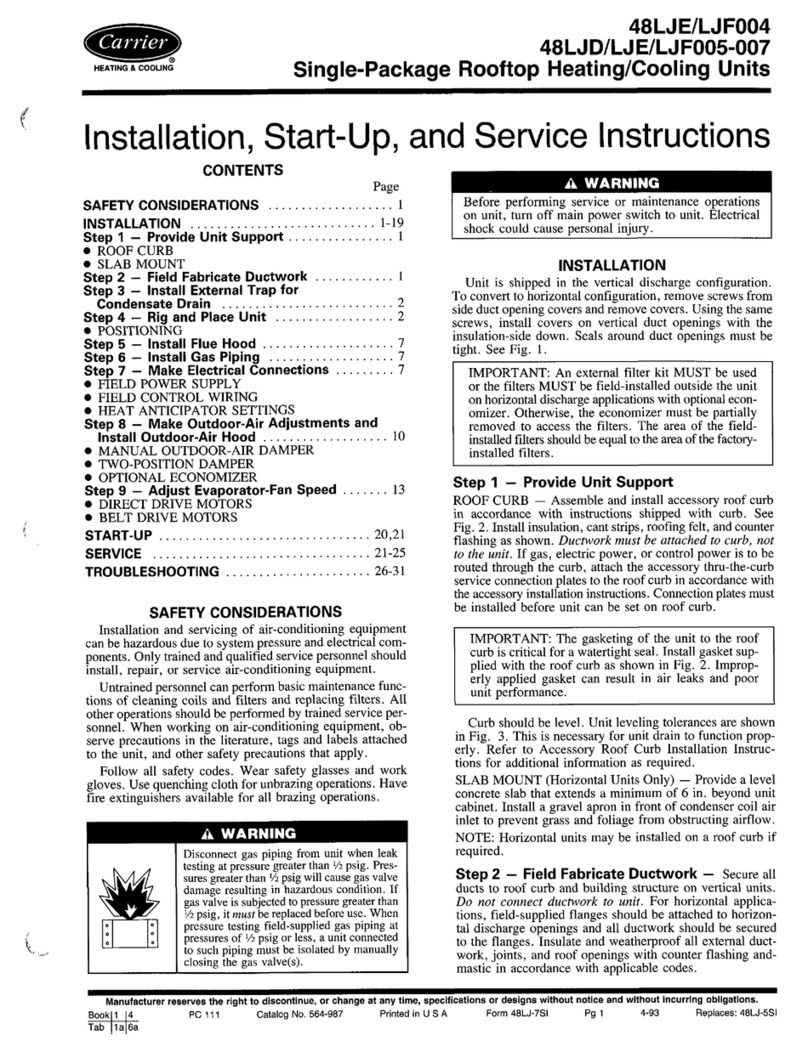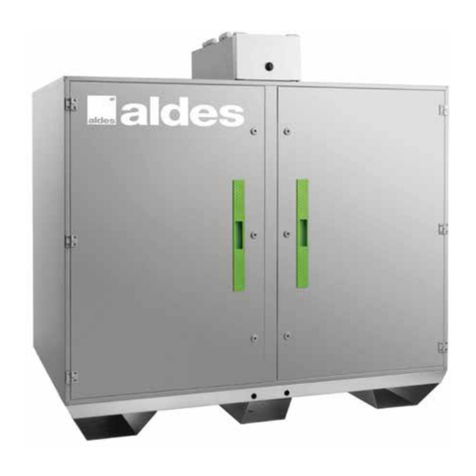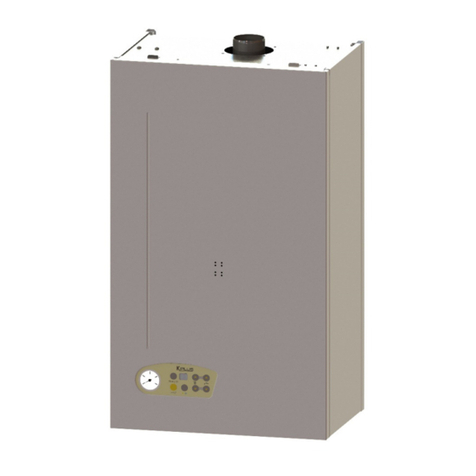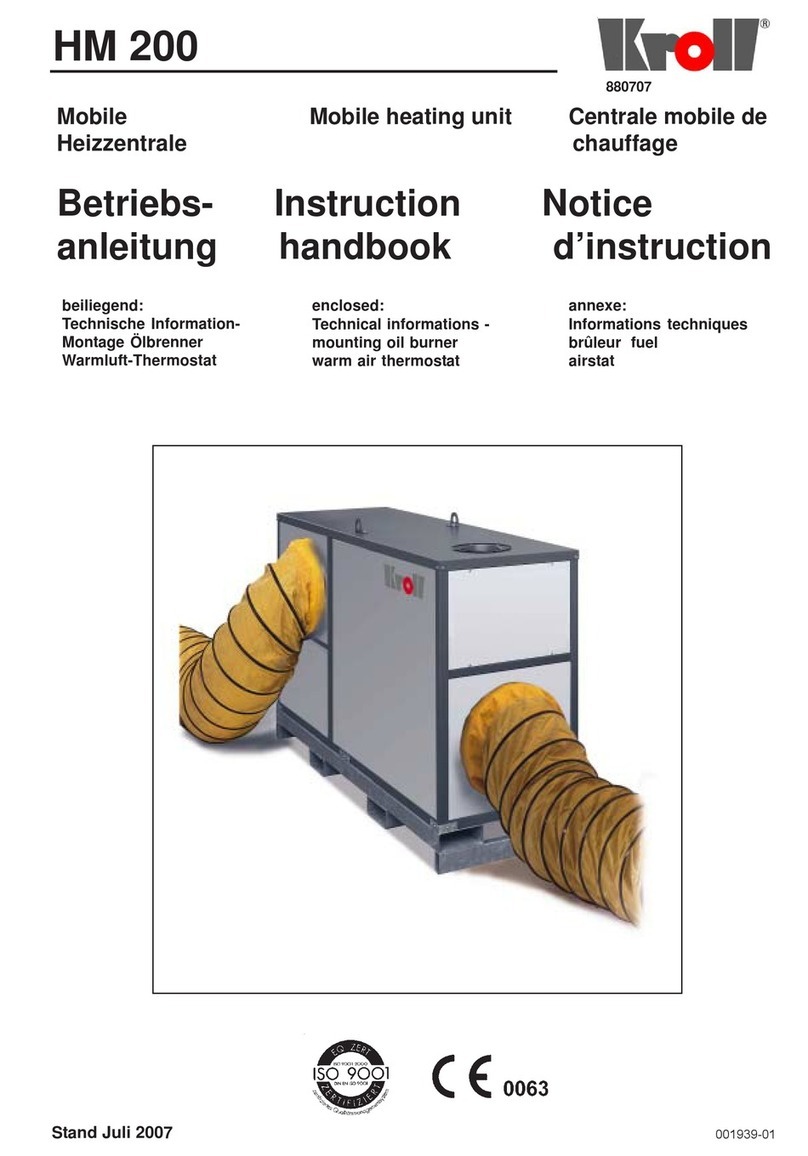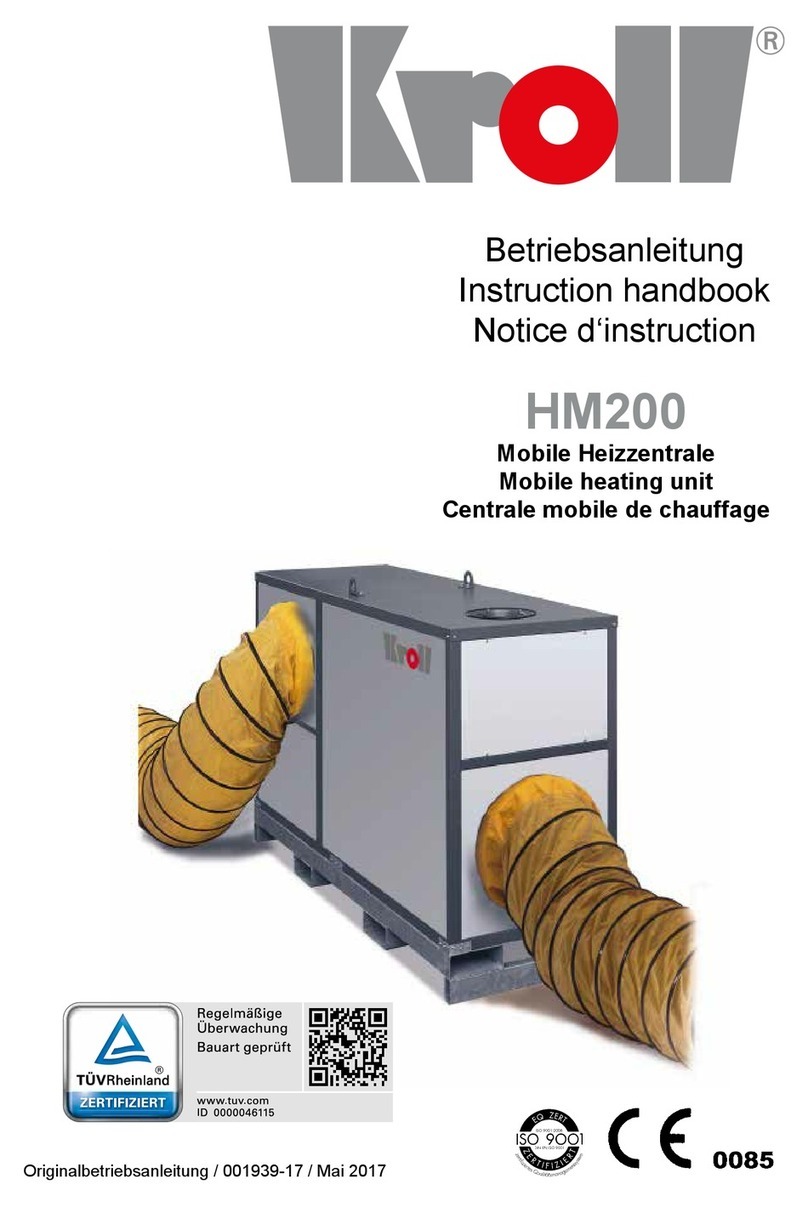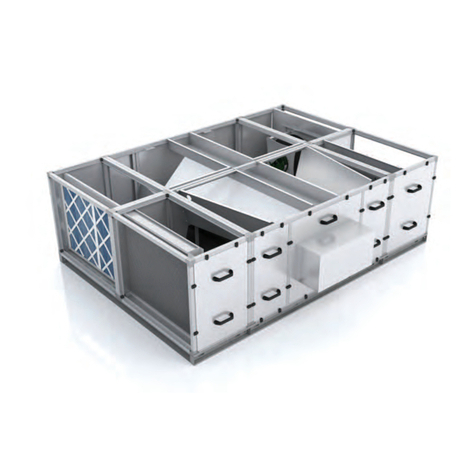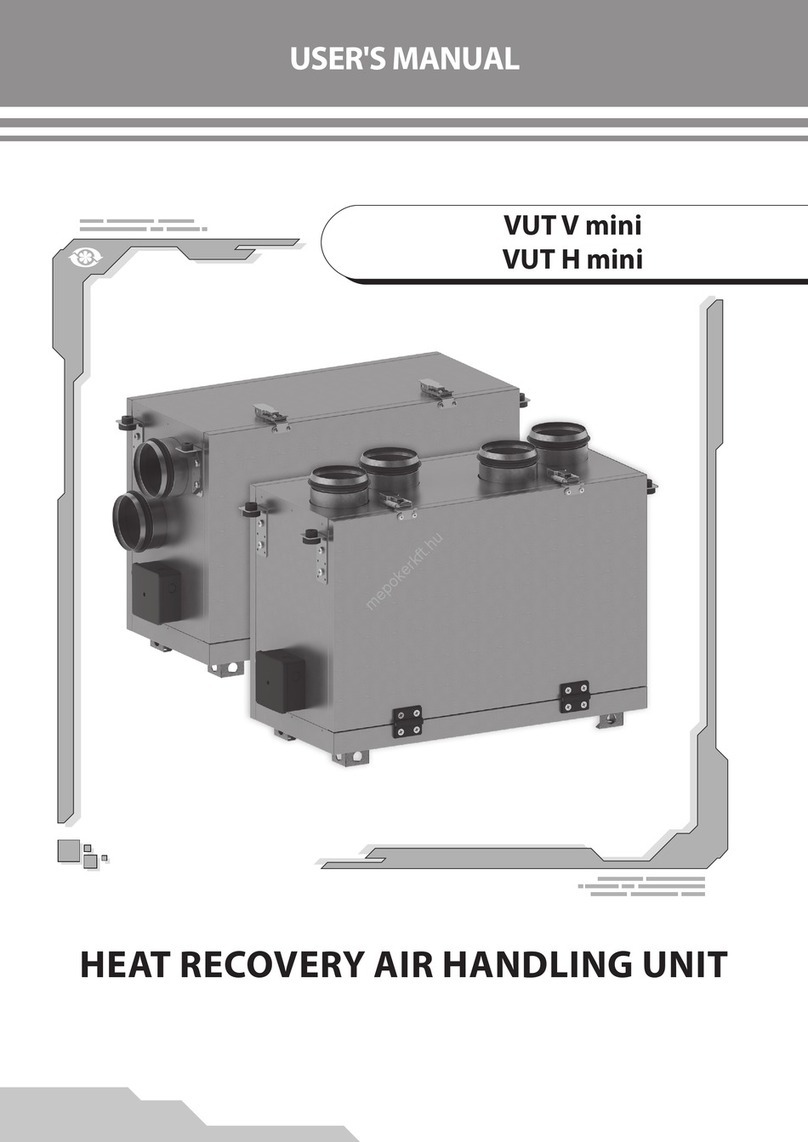
ø160
ø160
382 7
ø160
ø160
ø
15
175
580
1000
1000
191
310 380
150
5
3
4
9
1
276
8
10
12
12
11
13
GE Energy 1
Dimensions in mm
GE Energy 1 - Installation
The GE Energy 1 is available in a right-hand version (as
shown). For a mirror image unit, the front and rear panels
may be removed, the back panel mounted on the front
and the unit rotated 180°. This will cause the supply to
exchange places with the escaping and the fresh air with
the extract, with the cover on the correct side of the unit.
The drain connection will also be on the opposite side.
The unit must be positioned on a subsurface such that
vibrations from the unit cannot be transferred down through
ceiling and walls and such that the condensate drain with
the necessary trap can be led to an internal drain without
danger of freezing in cold weather, as in the winter period a
unit may produce up to 8 litres of condensate per day.
To allow access for service and maintenance, there must
be a clear space of a minimum of 600 mm in front of the
unit. If the unit is located in the loft, there must be free
access to the unit from the loft hatch.
Bypass:
The GE units can be delivered with modulising bypass or it
can be mounted on site.
Weight: 55 kg
GE Energy 2 - Installation
The GE Energy 2 is available in a right-hand version (as
shown). For a mirror image unit, the front and rear panels
may be removed, the back panel mounted on the front and
the unit rotated 180. This will cause the supply to exchange
places with the escaping and the fresh air with the extract,
with the cover on the correct side of the unit. The drain
connection will also be on the opposite side. The unit must
be positioned on a subsurface such that vibrations from the
unit cannot be transferred down through ceiling and walls
and such that the condensate drain with the necessary trap
can be led to an internal drain without danger of freezing in
cold weather, as in the winter period a unit may produce up
to 8 litres of condensate per day.
To allow access for service and maintenance, there must
be a clear space of a minimum of 600 mm in front of the
unit. If the unit is located in the loft, there must be free
access to the unit from the loft hatch.
Bypass:
The GE units can be delivered with modulising bypass or it
can be mounted on site.
Weight: 84 kg
1: Fresh (external) air
2: Escaping air
3: Extract air
4: Supply air
5: Countercurrent heat exchanger
6: Supply fan
7: Extract fan
8: Fresh air lter
9: Extract lter
10: Electrical cabinet
11: Condensate tray
12: Condensate drain 15 mm
13: Bypass
ø200
228
150
175
266
ø200
ø15
ø200
ø200
1000
580
580 10
4
3
1
2
5
89
76
12
10 12
11
13
GE Energy 2
Dimensions in mm
1: Fresh (external) air
2: Escaping air
3: Extract air
4: Supply air
5: Countercurrent heat exchanger
6: Supply fan
7: Extract fan
8: Fresh air lter
9: Extract lter
10: Electrical cabinet
11: Condensate tray
12: Condensate drain 15 mm
13: Bypass
